2022 Census
Census team mobilization aims at expansion of coverage in Brazilian favelas
March 28, 2023 11h00 AM | Last Updated: March 31, 2023 08h07 PM

Last Saturday (25), the IBGE conducted, in 20 states, a national Census Mobilization event with the objective of reducing the number of housing units that have not answered the 2022 Census in subnormal clusters, also known as favelas, communities, villages, slums in deep valleys or stilts.
The initiative is the result of a partnership between Central Única das Favelas (Cufa) and Data Favela in six states - Bahia, Goiás, Pará, Rio de Janeiro, São Paulo e Santa Catarina – where it was named favela on the Map. In Rio de Janeiro, another partner was Pereira Passos Institute (IPP). The ai mis to have community leaders from these localities guiding the enumerators and helping convince residents of the importance of the Population Census.
In Rio de Janeiro, the event Favela on the Map, held at Complexo da Penha, started at São Lucas Square, with talks by representative of the institutes and an “swap of shirts”, which represented the joint effort and the partnership established for this initiative. Then, a hike up to the field called Campo do Ordem, in Vila Cruzeiro, attracted residents’ attention and facilitated their contact with the enumerators, who got information about persons who had not yet answered the Census so that they could later visit those housing units and conduct the questionnaire.
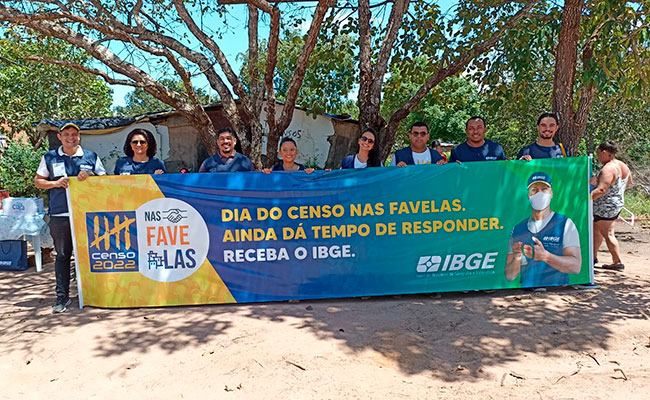


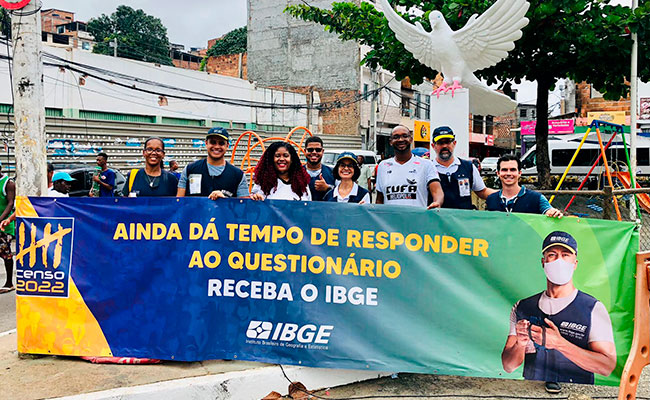


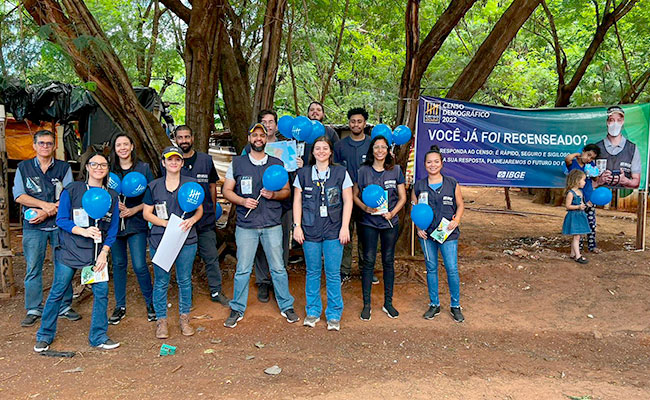
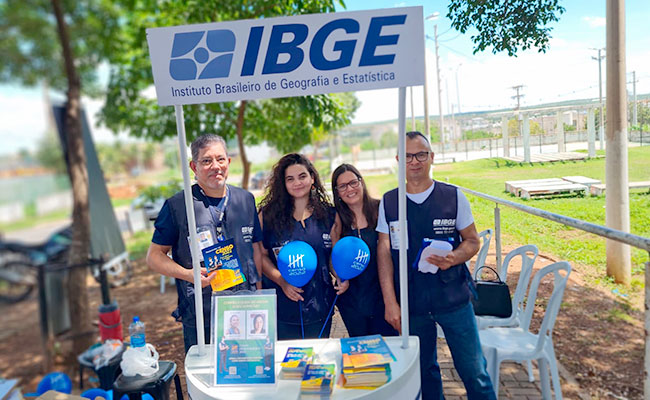
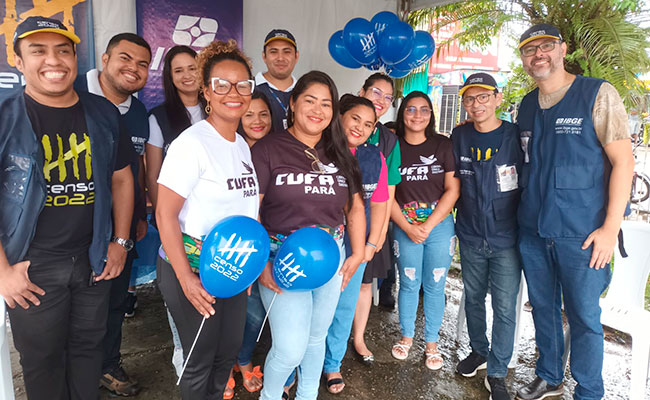


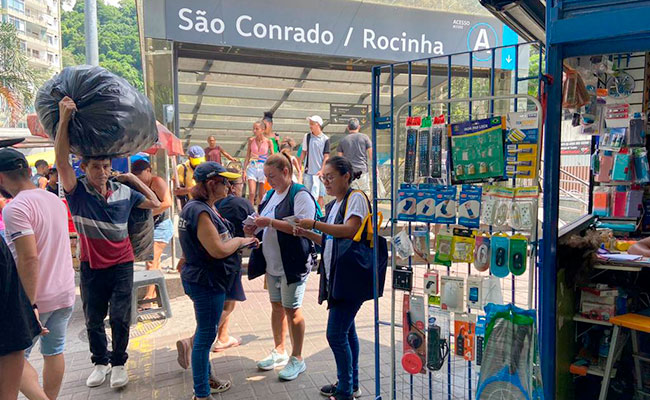
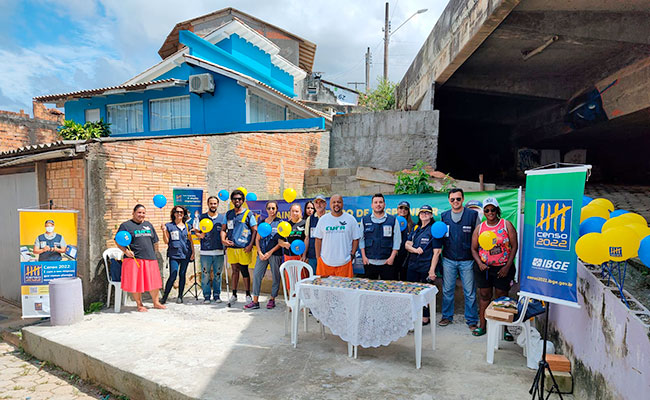
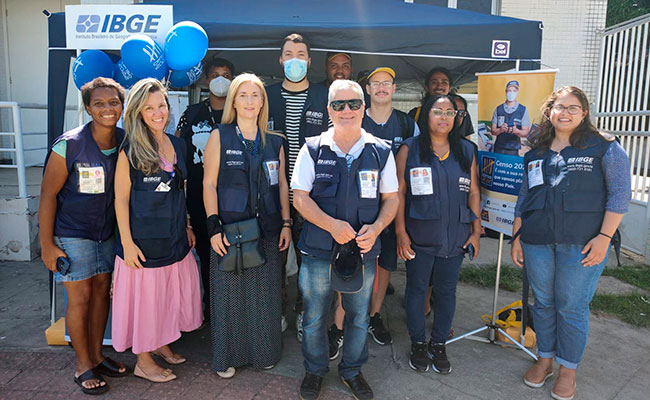

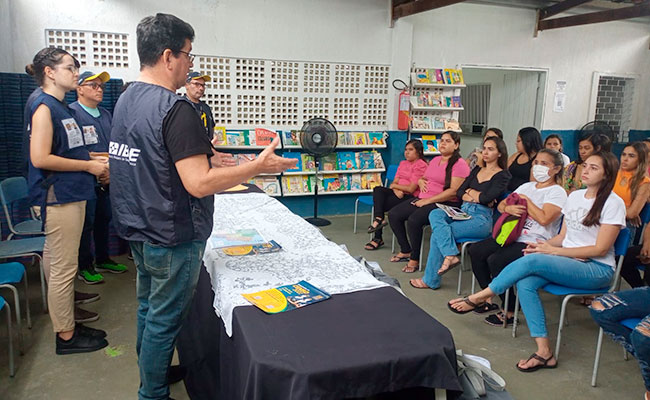
Cayo Franco, IBGE’s Geography coordinator, it is important to try to reduce non-response to the survey, which is now at 8.5% in subnormal clusters in Brazil. “The ideal target is being close to zero, which is always our objective, but a figure below 5% is an acceptable percentage, considering the resistance observed around the country,” he explains. Maria Lúcia Vieira, deputy director of surveys for the IBGE, however, highlights the importance of this joint effort to promote the survey in slums all over Brazil. “It is important to know that figure, important for Brazil, for Society and mainly for the residents of these areas.”

In Rocinha, IBGE teams received support from Pereira Passos Institute
IBGE teams went to Rocinha, in the southern area of Rio de Janeiro, with a work group formed by more than 20 persons, including census agents, IBGE directors and members of Pereira Passos Institute (IPP), a survey institution from the Rio de Janeiro city government, which is an IBGE partner for the 2022 Census. Rocinha had 69 thousand residents and 25 thousand housing units in the 2010 Census, being the biggest subnormal cluster in the country at the time.
Throughout the morning, IBGE teams walked around the favela to get names and addresses of persons whose housing units had not yet been enumerated. According to the Institute’s Survey and Mapping Agent, Victoria Ferreira, the work was productive and the people, very receptive. “We observed that some areas in the favela have a higher interview deficit; went there and got some addresses,” she says. Maria José, a 50 year old housewife, lives in one of the households in a total of 16.5% not covered in the location. “I informed by address and the professional explained everything to me. Now all I have to do is wait for the enumerator.” Jaqueline, age 29, said she had already been enumerated, “I was familiar with the Census and it did not take long to answer the questions.”
The deputy director of Geosciences, Miriam Barbuda, attended the event and was happy for receiving support from community leaders, social activists and researchers experienced in the field in this final phase of the Census. “These people are part of Institutions that serve communities, who know these territories well and also how difficult it is to map addresses and find people at home. That is their greatest contribution to the Population Census.”
Carlos Krykhtine, president of IPP, has also been there. He stated that the municipal institute is “doing its homework” to help in the census operation at subnormal clusters all over the city. “We know the last phase of the Census is always the hardest. So we are helping the IBGE in this mission. We are happy to know other institutions have joined us with the same purpose.”
The head of the IBGE Department of Social Territories, Jaison Luiz Cervi, partnering with other institutions is essential for the conclusion of data collection and to ensure data security. “very little is left for the end of data collection, but that is fundamental to guarantee operation quality. This mobilization initiative has been wonderful, because we got to reach the initial objectives and are now moving towards future developments.”

Population Census close to the end
The survey will remain on its verification phase in April, with occasional actions aimed at specific audiences in order to reduce non-response in localities that faced more difficulties during data collection. A total of 191 million persons have already been enumerated in Brazil.



















